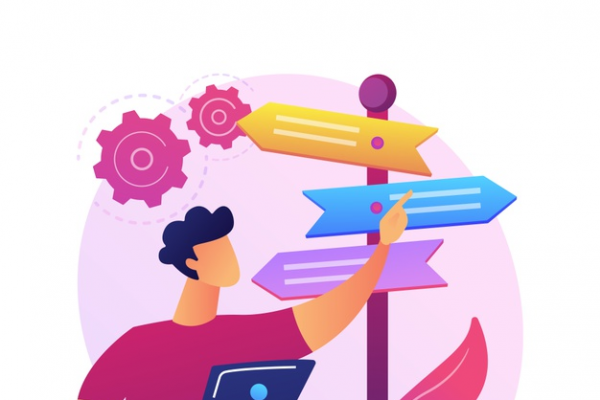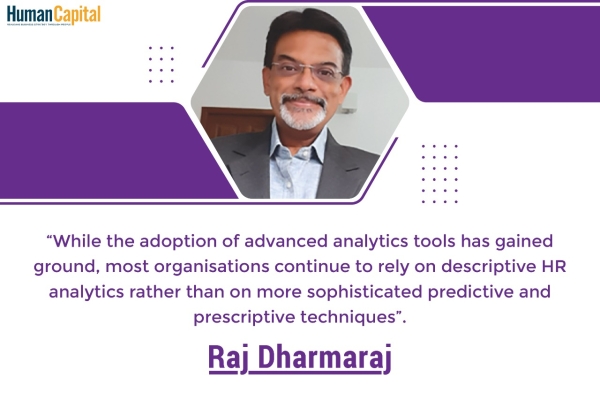To have a successful training programme, you have to offer both accessibility and inclusion. It must therefore be ensured that trainers are adequately training in universal design and inclusive training practices.
Hiring managers increasingly realise that recruitment and retention need to be a part of the same effort. Many companies concentrate their efforts almost exclusively to ensure that their recruitment processes are inclusive of people with disabilities (PwDs), then discontinue those efforts after their first day. However, replacing a worker costs the organisation up to one-third of the employee’s salary, which quickly adds up with high employee turnover.
A 2012 U.S. Census Bureau report has reported that 1 out of 5 employees is a PwD, and in 2015, the Federal Bureau of Labour Statistics has revealed that 17.5 percent of the US workforce are PwDs. Increased focus over retaining employees with disabilities has a huge impact on an organisation’s bottom line.
One of the often-overlooked aspects of retention is training. When organisations do not try to ensure that their training programmes and avenues for professional development are inclusive, they signal to employees with disabilities that the organisation is not invested in their career growth.
Building Training Programmes for the Employees
An employer not being aware that he/she has people with disabilities on their payroll does not mean that they are non-existent. Many employees may choose not to disclose a disability to their employer. As has been stated by Derek Shields, a consultant and trainer for the Employer Assistance and Resource Network on Disability Inclusion (EARN), existing employees participating in training and development offerings might not be as successful because the programmes are not inclusive. And by creating training programmes that are more inclusive, an organisation is set to receive a bigger return on its investment.
Include Employees with Disabilities in the Training Process
Robin Nagel, a consultant and ADAAA/FEHA compliance practitioner who specialises in work disability prevention and management, says that inclusive training programmes must be created by learning from employees with disabilities about their needs.
Shields says that training must be devised on the basis of preference and the tools needed for participation. It is also essential to involve the stakeholders at all levels of the process including the design, testing, and implementation. He further adds that the effectiveness of the programme can be enhanced if they are regularly reviewed.
Programmes to be Accessible and Inclusive
There is a difference between accessible and inclusive, and accessibility is only the starting point. As an example, Shield illustrates: - If you offer an inclassroom training programme, but your building does not have an elevator and the class is on the third floor, a person in a wheelchair or scooter will be unable to participate. That is an accessibility issue. However, if a person with a disability can get to the classroom, but finds the experience in the classroom is exclusionary, that is a problem with inclusion. To have a successful training programme, you have to offer both accessibility and inclusion. It must therefore be ensured that trainers are adequately training in universal design and inclusive training practices. And organisations such as EARN and The Campaign for Disability Employment offer resources for creating inclusive training programmes.

Has COVID-19 forever changed the way we live and work?
Trending
-
SBI General Insurance Launches Digital Health Campaign
-
CredR Rolls Out 'Life Happens' Leave For Its Employees
-
Meesho Announces 30-Week Gender-Neutral Parental Leave Policy
-
Microsoft Unveils Tech Resilience Curriculum To Foster An Inclusive Future
-
60% Indian Professionals Looking For Job Change Due To COVID: Survey
-
SpringPeople And Siemens Collaborate For Digital Transformation Push
-
86% Professionals Believe Hybrid Work Is Essential For Work Life Balance: Report
-
Almost 1 In Every 3 People's Personal Life Affected Due To Work Stress
-
Meesho Rolls Out Reset And Recharge Policy For Employees
-
80% Of Talent Leaders & Academics Say Pandemic Changed Skill Needs For Youth: Report
-
Hero Electric Rolls Out 'Hero Care' Program For Employees
-
Human Capital In Collaboration With ASSOCHAM Hosts Virtual Conference
-
IKEA India, Tata STRIVE Collaborate To Create Employability And Entrepreneurship Opportunities
-
SAP India, Microsoft Launch Tech Skilling Program for Young Women
-
DXC Technology, NASSCOM Collaborate For Employability Skills Program
-
Lenskart To Hire Over 2000 Employees Across India By 2022
-
Mindtree Launches Learn-and-Earn Program
-
Tata AIA Extends 'Raksha Ka Teeka' To Its Employees
-
Swadesh Behera Is The New CPO Of Titan
-
NetConnect Global Plans To Recruit 5000 Tech Professionals In India
-
Hubhopper Plans To Hire 60% Of Indian Podcasters By 2022
-
Corporate India Needs More Women In Leadership Roles: Report
-
Aon to Invest $30 Million and Create 10,000 Apprenticeships by 2030
-
Tech Mahindra Launches ‘Gift a Career’ Initiative for Upskilling of Youth
-
40% Women Prefer Flexible Working Options in Post-COVID World: Survey
-
3 out of 4 companies believe they can effectively hire employees virtually: Report
-
Vodafone , CGI and NASSCOM Foundation launch digital skills platform
-
Odisha: Bank, postal employees to deliver cash for elderly, differently-abled persons
-
Skill India launches AI-based digital platform for "Skilled Workforce"
-
Hiring activity declines 6.73% in first quarter: Survey
-
70% startups impacted by COVID-19 pandemic
-
Bajaj Allianz Life ropes in Santanu Banerjee as CHRO
-
Over 70 Percent MSMEs look at cutting jobs to sustain businesses
-
93 Per Cent employees stressed about returning to office post-lockdown
-
Johnson & Johnson India announces family benefits for same gender partners
-
Indian firms turning friendly towards working mothers
-
Welspun India names Rajendra Mehta as new CHRO
-
Wipro partners with NASSCOM to launch Future Skills platform



Human Capital is niche media organisation for HR and Corporate. Our aim is to create an outstanding user experience for all our clients, readers, employers and employees through inspiring, industry-leading content pieces in the form of case studies, analysis, expert reports, authored articles and blogs. We cover topics such as talent acquisition, learning and development, diversity and inclusion, leadership, compensation, recruitment and many more.
Subscribe Now












































Comment